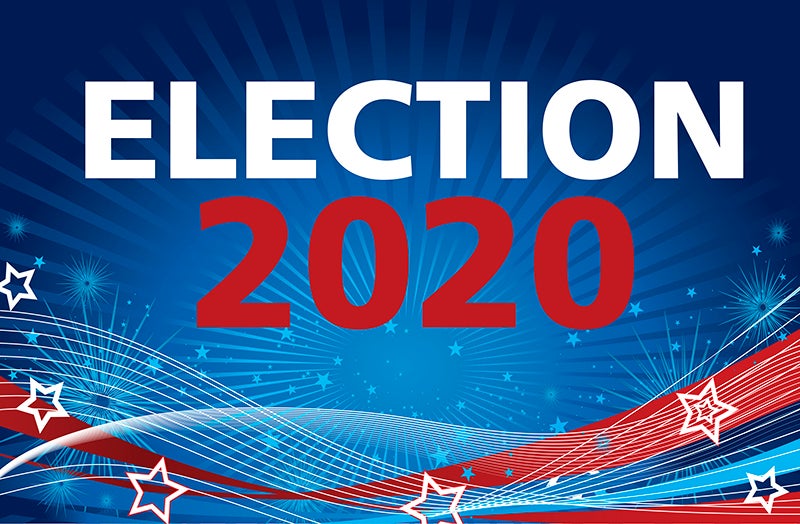Campaign cash piles up in final stretch
Published 4:57 pm Saturday, October 17, 2020
|
Getting your Trinity Audio player ready...
|
By David H. Montgomery, Minnesota Public Radio News
Minnesota’s congressional candidates have millions of dollars to spend in the campaign’s final weeks — though some candidates have more money on hand than others.
In the U.S. Senate race, incumbent Sen. Tina Smith had nearly $3 million in the bank as of Sept. 30 — twice as much as the $1.45 million of her Republican challenger Jason Lewis.
Smith has been dramatically outspending Lewis, with $6.8 million in total expenses over the past three months to $1.9 million for Lewis.
Sept. 30 was the end of the most recent campaign finance reporting period, as overseen by the Federal Election Commission. Campaign finance numbers for the third quarter of the year had to be submitted by Oct. 15. In the case of Minnesota, these figures cover money raised and spent from July 23 to Sept. 30, with fundraising from early July covered in a special report filed before Minnesota’s August primary.
Candidates will file reports next week showing fundraising and expenses from Oct. 1 through Oct. 14.
Democrats have cash advantage in key House races
In the battle for Congress, Democrats have the money edge in the state’s three most competitive districts. As of Sept. 30, 1st District Democratic candidate Dan Feehan had nearly five times the war chest of incumbent Rep. Jim Hagedorn. Feehan raised three times as much money as Hagedorn in the last quarter, and outspent him nearly two-to-one.
In the south-suburban 2nd District, Democratic Rep. Angie Craig also had a bigger campaign fund than her Republican rival, Tyler Kistner. Craig had $2.19 million to Kistner’s $568,000. This mostly reflected Craig’s fundraising head start: Kistner raised almost as much money as Craig in the third quarter, $1.19 million to Craig’s $1.33 million.
Western Minnesota’s 7th District saw incumbent Rep. Collin Peterson, a Democrat, with twice as much money in the bank as his Republican challenger, Michelle Fischbach: $1.5 million to her $710,000. Fischbach slightly outraised Peterson in the third quarter, and he spent slightly more money.
All these fundraising totals are only part of the overall campaign finance picture. In addition to money spent by the candidates, outside groups also spend money supporting and opposing candidates in these hotly contested races.
One eye-popping figure came in Minneapolis’ 5th District, a heavily Democratic area whose congressperson, Rep. Ilhan Omar, is a prominent and controversial nationwide political figure. Omar had just $235,000 in the bank on Sept. 30, after raising $1 million and spending $1.5 million following her primary victory over Antone Melton-Meaux.
But Omar’s Republican opponent, Lacy Johnson, is raking in money from around the nation for his long-shot bid. He had $1.2 million on hand after raising $5 million and spending $4.7 million. Johnson’s high figures reflect in part the churn of a low-dollar fundraising operation spending lots of money to raise more money.
Meanwhile the 3rd District saw Democratic Rep. Dean Phillips with just slightly more money than Republican challenger Kendall Qualls. Neither candidate there raised big bucks in the third quarter by modern standards: $680,000 for Phillips and $700,000 for Qualls — though just a few years ago that would have been considered a lot of money for a congressional race.
Other districts are less competitive money-wise. Favored Republican incumbent Rep. Pete Stauber in the 8th District had $777,000 on hand compared to challenger Quinn Nystrom’s $120,000. In the heavily Republican 6th District, Rep. Tom Emmer had $1.3 million in the bank while opponent Tawnja Zahradka hadn’t filed a campaign finance report by Friday afternoon. As of late July, however, Zahradka had just $7,605 on hand on $34,000 in total fundraising.
Rep. Betty McCollum had just $128,000 on hand in the 4th District, but it probably doesn’t matter: her opponent in the heavily Democratic district, Gene Rechtzigel, reported just $100 in the bank.





